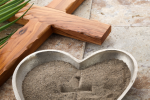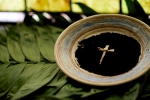May 21, 2012
Creating a Blessing
In 2009, General Convention passed a resolution to create resources for same-gender blessings. These resources are an attempt to create tools, including theological and liturgical resources, for those same-gender couples that feel called to form a lifelong covenant with each other.
Bowie Snodgrass was on the committee that produced a liturgy for same-gender blessings. She also founded Faith House, and has been a lay minister for many years in various capacities. I spoke with her about the experience of working on the committee and helping create the same-gender liturgy.
The process, she explained, was a communal one. The committee met between July 2009 and August 2010. They collected preexisting ceremonies from many different people, wrote and rewrote a ceremony, and received feedback from various communities and individuals, including the Anglican Liturgical Consultation, which they incorporated into the liturgy. “So much was worked over and over that it really came out of the group and the feedback and the movement of the Holy Spirit,” she said. “It really is a work of the people.”
This is only the beginning of the process, of course. “The Episcopal church is very progressive and moving at a reasonable pace on this issue, “ said Snodgrass, and things are changing quickly. “You have this huge diversity of situations and opinions.”
The committee’s task was clearly defined and relatively narrow. “Our task was to produce these resources. We didn’t’ have to defend it, just create a blessing.” Other committees developed theological resources,pastoral resources, teaching resources, or canonical resources.
“We wanted this to be an opportunity to create a new service that wasn’t just updating the marriage rite,” she explained. Though the language has been updated, the marriage rite has not been significantly altered in many decades. “The real issue is about people coming together and having their relationship be blessed by God, blessed by the church, and blessed by the community. “
Snodgrass explained that she had a sense of the importance of community in a covenant going into the process from her own marriage ceremony at the Cathedral of St. John the Divine. “It was a blessing of our marriage, but it was really about saying our vows out loud in front of God and in front of our community.”
“When a church community comes together and gathers around its own people for a baptism or a marriage, that’s when church is church. Yes, there’s a presider but the service really was designed to be participatory. This is not a service that is designed to be done privately, but publicly.”
“I think this is a service that is very much focused on the people of a church coming together before God and before that community to make a lifelong commitment.”
Recently, Snodgrass presented the liturgy at Charlotte’s Place at Trinity Wall Street as part of a Faith House event. Beforehand the attendees had questions about marriage equality and technical questions. “But afterward they were impressed by the beauty of the service. They were impressed by the Episcopal approach to liturgy.”
The report and the liturgy can be found in the Blue Book, here (starting on page 185), and will be considered for use at General Convention in July, and may become a resource for priests and communities around the country seeking to do same-gender blessings.
There are lessons to be learned from the process that Bowie describes: keep the tasks focused and narrow, make the process transparent, incorporate feedback, create tools without pushing them too hard on those who aren’t interested or ready for them, and focus on worship in community, as the Anglican church has for a very long time.
“Every time I’ve been to a reading of this particular service I find it incredibly moving,” said Snodgrass. “I can’t predict what the future will be but I think that the work that went into this was inspired in that it was the spirit moving through a lot of people.”





